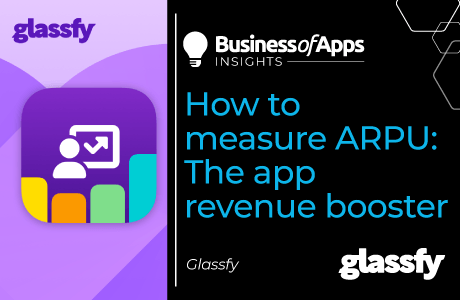
In the growing era of subscription app businesses, understanding the financial performance and revenue generated from individual customers is critical.
Two essential metrics to monitor in this regard are average revenue per user (ARPU) and average revenue per paying user (ARPPU). In this article, we will provide insights into these metrics and their significance in evaluating the monetization potential of your customer base.
What is average revenue per user (ARPU)?
ARPU measures the average revenue generated by each user or customer of your subscription service within a specific period. It provides valuable insights into how effectively you’re monetizing your entire customer base and serves as a benchmark for evaluating the financial performance of your business.
ARPPU specifically focuses on the average revenue generated per paying user, excluding any revenue from free or trial users. It provides insights into the monetization potential of your paying customer base and allows you to evaluate the effectiveness of your pricing strategies and upselling efforts.
Average revenue
Source: Glassfy
The importance of tracking ARPU and ARPPU
Monitoring ARPU and ARPPU provides several advantages:
- Revenue optimization: Assess the effectiveness of your pricing strategies and monetization efforts. By identifying segments of customers with higher or lower revenue contributions, you can optimize your pricing plans, upselling strategies, and feature offerings to maximize revenue potential.
- Customer segmentation: Segment your customer base based on revenue contributions. This segmentation helps you identify high-value customers who may require special attention and tailor personalized offerings to maximize their satisfaction and revenue potential.
- Product strategy evaluation: Gain insights into the performance of different product tiers, plans, or features. By comparing ARPU and ARPPU across these segments, you can evaluate the impact of pricing changes, upselling strategies, or feature adoption on revenue generation.
- Business growth and forecasting: Understand the growth trajectory of your subscription business. By analyzing month-to-month or year-over-year changes, you can identify trends, forecast revenue potential, and make data-driven decisions to foster sustainable growth.
Calculating ARPU
To calculate ARPU, divide the total revenue generated within a specific period by the number of active users or customers during that same period.
ARPU formula
Source: Glassfy
ARPU calculation example
Let’s assume your subscription business generated $10,000 in revenue in a month and had 500 active users during that same month.
- ARPU = Total Revenue / Number of Active Users
- ARPU = $10,000 / 500
- ARPU = $20
This revenue is generated only by paying users, a subset of all users.
If we assume that only 20% of users are paying:
- ARPPU = Total Revenue / Number of Active Paying Users
- ARPPU = $10,000 / 100
- ARPPU = $100
What about LTV, MRR, and churn rate?
Subscription-based services can be equally amazing or painful in growth, understanding and effectively utilizing key metrics is paramount to achieving sustainable growth and profitability. These next metrics are key to tweaking and honing your offering to maximize growth long term. LTV is your true real metric to tell you how healthy your business is, don’t let anyone tell you differently!
This book explores five essential metrics that every subscription app business needs to measure and optimize: monthly recurring revenue (MRR), average revenue per user (ARPU), lifetime value (LTV), churn rate, and trial conversion rate.
AdTech is changing — it’s time to find out how
AI, privacy shifts, and new monetization models are transforming the app industry. Learn more about these changes and other app marketing insights in the AdTech Trends 2025 Playbook by Yango Ads.
[Download Playbook]Get your copy of the Subscription App Metrics ebook!













